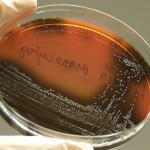A new book on the aryl hydrocarbon (AH) receptor has recently been published; the title of the book is The AH Receptor in Biology and Toxicology. Professor of Toxicology, Raimo Pohjanvirta, from the Department of Food Hygiene and Environmental Health, Faculty of Veterinary Medicine, is the editor of the book. Nowadays the AH receptor is a hot research subject in the biomedical research field, such as research of autoimmune diseases, physiological intestinal immune defense, blood vessel development, tumor cell proliferation, and functional regulation of the testicles, as well as in toxicological research topics, like toxicity mechanism of dioxins and PAH compounds, natural AH receptor ligands in food, and effects of ultraviolet light.
 The book provides an up-to-date overview of the AH receptor and its unique dual role in toxicology and biology. The coverage includes epigenetic mechanisms, gene expression, reproductive and developmental toxicity, signal transduction, and transgenic animal models.
The book provides an up-to-date overview of the AH receptor and its unique dual role in toxicology and biology. The coverage includes epigenetic mechanisms, gene expression, reproductive and developmental toxicity, signal transduction, and transgenic animal models.
The book is intended for the researchers and students in the disciplines of toxicology, pharmacology, physiology, cell biology and biochemistry, and also for everyone interested in getting more information on the subject.
“Surprisingly, there has not been any book available solely focusing on this important receptor in the fields of physiology and toxicology before. When a representative of the major American publishing company, John Wiley & Sons, contacted me at the end of spring 2009, and asked if I were interested in editing a book of this kind, I enthusiastically accepted the challenge.” Raimo Pohjanvirta tells about the early stages of editing the book. “I made a preliminary table of contents and a brief description of each chapter´s contents, which were sent to six independent reviewers for a scientific evaluation. I invited some thirty globally renowned leading researchers to my “dream team”, and gladly almost everyone accepted my request to be the responsible author of an individual chapter.
The Finnish research is also well displayed in the book. Three out of 35 chapters were written by Finnish researchers. “I thought that it is important to bring out the high quality of Finnish research on dioxins and the AH receptor. In addition to this, I wrote one chapter and the preface myself. All this hard editing work was highly rewarding because the outcome is very successful in my opinion”, says Raimo Pohjanvirta. “Hopefully the book will be an important source of information for a long time to come for all those interested in the AH receptor.”
The AH Receptor in Biology and Toxicology (ed. by Raimo Pohjanvirta; Wiley & Sons, Inc. 2012; 531 p.)







